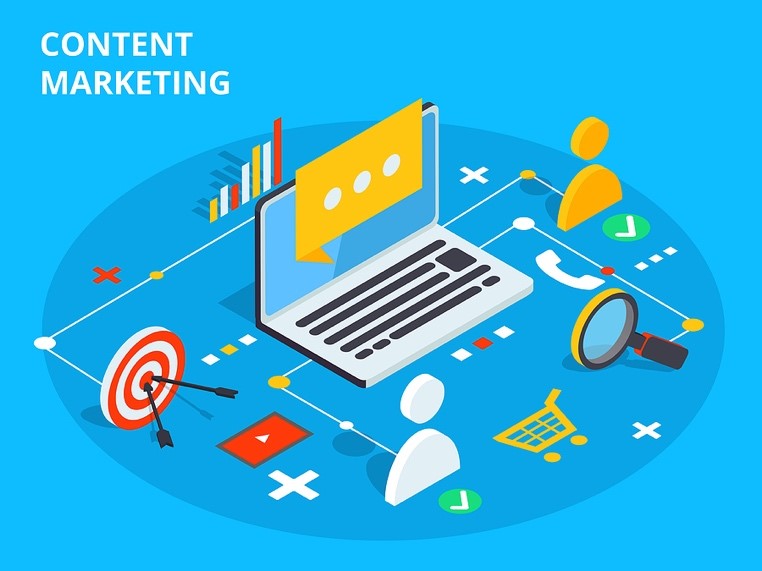 Your customers are busy and have limited attention spans as it is. So, with everything going on right now with the pandemic and the upcoming election, it’s harder than ever to get in front of your prospects, grab their attention and engage them. How do you get on their radar when they are focused on so many other things these days in addition to their business?
Your customers are busy and have limited attention spans as it is. So, with everything going on right now with the pandemic and the upcoming election, it’s harder than ever to get in front of your prospects, grab their attention and engage them. How do you get on their radar when they are focused on so many other things these days in addition to their business?
There is a solution — using visual and interactive content in your content marketing — which can draw in your target audience more easily because this type of content can be so effortless to view and digest. It can also be much more interesting and even fun as there are unlimited possibilities for you to be creative.
Benefits of Creating Visual and Interactive Content
Visual and interactive content can produce a higher rate of engagement such as increased lead generation, social media following, link building and traffic going to your website. It is more than just words on a page and can stir emotions and create an experience for the customer.
Because visuals and interactive content are more successful at captivating and entertaining as well as educating, users are more likely to find value in it and even share it on social media. When your prospects have enjoyed the content you’ve provided, they are more willing to trust you and provide data on themselves — relevant data that will help you with creating more useful and targeted content for them and eventually building brand loyalty.
Visual and interactive content helps you stand out from competitors who may still be doing the same static, text-heavy materials and it helps people view you as an expert in your field, again building trust and brand loyalty. When your prospects grow to trust you, they are more likely to convert. In fact, interactive content generates two times more conversions than passive content.¹ It has become a powerful way to fill your pipeline.
Ideas for Visual and Interactive Content
Visuals that can be either interactive or static include photos, maps, charts, graphs, timelines, and screenshots. When you make these visuals interactive, you truly drive customer engagement as you create a two-way experience between you as the creator and your prospect.
A sampling of other valuable content that can be interactive includes:
Infographics – Can be created in a variety of forms and made interactive through animation, scrolling effects and letting users highlight certain areas for more information. See a visually stunning interactive infographic of the “new” New York City skyline.
Videos – Provide the freedom to be creative and are the best medium for telling your story. They can be interactive by adding “hotspots” – tags or links in the video to supplementary information or other content. This SimplyDIRECT video contains a link at the end to an interactive survey.
Slide Shows – Can engage the user with inserted icons or hotspots that can take them to another slide or additional content.
Games – Leverage the popularity of video games to reach your audience with something they enjoy and love. Gamification is being used more and more in marketing to subtly convey sales messages while creating a fun experience for the customer. Check out marketing game examples from gamification master, CataBoom.
Calculators – Provide users with data or results based on their input. These tools are super easy for the user but are a clever strategy for conveying the benefits or outcomes of your product or service, such as ROI, cost or time savings, etc., without all the marketing speak. HubSpot’s budget planning calculator helps companies figure out their advertising ROI.
Polls and Surveys – Give you a way to get data from your prospects or followers. The key to being successful with these is to keep them short and to reward the respondents. Typically, a poll is 1-2 questions while a survey has multiple questions.
Conclusion:
As we’ve become a busier society, we’ve also become a more visual one. That means that businesses need to create more visual and interactive content to engage their target audience.
One of the benefits of using our surveys is that they yield customer data that can fuel ideas for the creation of visuals and interactive content. By gaining an understanding of a company’s or industry’s pain points, you can create content that conveys a message that resonates and zeros in on their goals, needs and interests.
Get free survey samples and learn how surveys can yield more than leads, producing data about your target customers that can be used to understand what types of content will help you best engage, connect and build trust with them.
¹ According to Demand Metric’s Content and Buyer’s Journey Benchmark Report, “Interactive content, such as apps, assessments, calculators, configurators and quizzes, generate conversions moderately or very well 70% of the time, compared to just 36% for passive content.”
